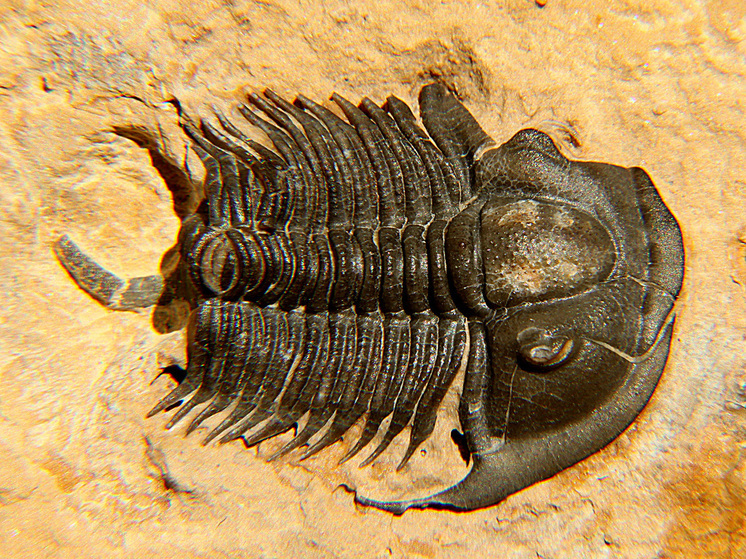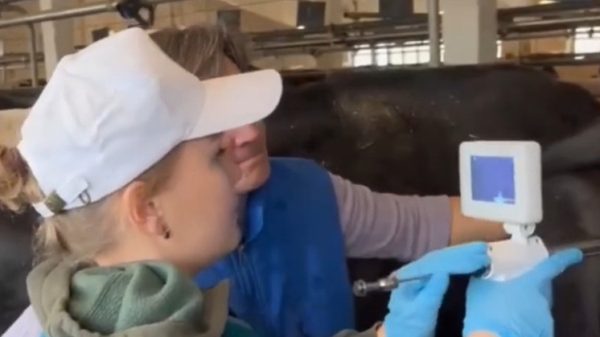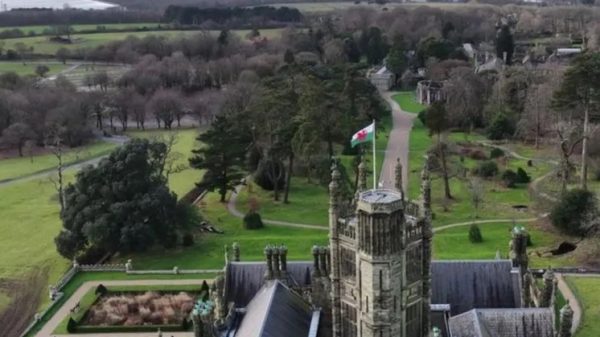«This is a unique window into history»
About half a billion years ago, a volcanic eruption near a shallow sea in what is now Morocco preserved some of the most complete specimens ever found of beetle-like sea creatures called trilobites, revealing anatomical details that scientists had never seen before.

In a matter of moments, a rapid flow of hot ash and volcanic gases, called a pyroclastic flow, consumed the trilobites , and then cooled and hardened into solid rock. Trilobites died on the spot — much like the people who were buried under a layer of ash in Pompeii in 79 AD during the eruption of Vesuvius, CNN says.
For 515 million years, all evidence of these trilobites remained hidden, buried in a place called the Tatelt Formation in the High Atlas Mountains. But recently, an international team of researchers used high-resolution X-ray microtomography to peer through the layers of trilobite burials. The analysis revealed nearly intact three-dimensional imprints of vaporized animal bodies inside chunks of volcanic rock, scientists reported June 27 in the journal Science.
Using images of these prehistoric forms, scientists reconstructed 3D digital models that depict trilobite anatomy in unprecedented detail. The hot volcanic flow that buried the trilobites preserved impressions of soft tissues that are not usually fossilized, including digestive organs, antennae, feeding organs, and clusters of sensory setae, as well as tiny spines on the trilobite's appendages.
«It's just incredible that this can be seen in 3D without any changes or deformations,» lead study author Dr. Abderrazaq El Albani told CNN. He said the detailed preservation showed that trilobites were anatomically complex animals with many specialized adaptations for feeding and moving along the seabed.
Chemical analysis of the oxygen content of sediments in and around the samples showed that the trilobite's insides were filled with ash, which was likely ingested when the animals suffocated in ash clouds in seawater, the study authors wrote.
Pressure of the layers sedimentary rocks often crushes fragile fossils. But after the eruption buried the trilobites, cold seawater mixed with hot ash and quickly turned the pyroclastic flow into a solid rock grave. According to El Albani, a professor of geosciences at the University of Poitiers in France, this prevented the trilobites from deforming their shapes and preserved an almost perfect imprint of their bodies.
El-Albani added that the findings also highlight the urgent need to protect fossil-rich sites in Africa such as the Tatelt Formation. Unlike Tatelt, the Burgess Shale, an important Cambrian fossil in Canada, is recognized as a UNESCO World Heritage Site. Such protection helps ensure that buried remains of Earth's distant past remain available for future research, El-Albani said.
Over the past 200 years, paleontologists have identified more than 22,000 species of trilobites from places around the world that were once covered by oceans. Trilobites were arthropods like modern insects, spiders, millipedes and crustaceans, and evolved into a wide range of shapes and sizes before going extinct about 252 million years ago. Most trilobite species are no more than 1 inch (2.5 centimeters) long, but some, such as Hungoides bohemicus, reach lengths of more than 12 inches (30.5 centimeters).
Trilobites had a strong exoskeleton that usually fossilizes well. However, preservation of soft tissue in newborn trilobites is extremely rare, said Dr. Melanie Hopkins, curator of invertebrate paleontology at the American Museum of Natural History in New York.
“Only a small fraction of trilobite species are so well preserved that we can even see their appendages,” says Hopkins, who studies trilobites but was not involved in the new study. «The level of detail preserved in these samples is extremely unusual, so much so that there are some features that have not been previously observed,» she said. Hopkins added that «such features are critical for understanding how new traits and new species evolve, and for tracking relationships between arthropod groups.» The more anatomical detail we have, the better we can draw conclusions about how fossil arthropods were related to each other.
Scientists found four specimens of trilobites and identified two species new to science: Gigoutella mauretanica and Protolenus (Hupeolenus) — the second is an as yet unnamed species from a known genus and subgenus. The length of the samples varied from approximately 0.4 inches (11 millimeters) to 1 inch (26 millimeters).
“This is the first time we have managed to save the upper lip,” El Albani said. The mouth gap behind the lower lip was also perfectly preserved,” he reports. «This is the first time we have been able to save the upper lip,» El Albani said. Around it were thin, curved appendages likely used for feeding, which also had not previously been found in trilobite fossils, the study authors said.
According to Melanie Hopkins, the discovery of these structures raises new questions about the diversity of trilobite food appendages; about how this might have affected what trilobites ate and where they lived; and their vulnerability to changing environmental conditions if they had a highly specialized diet.
The suddenness of the Cambrian volcanic eruption even preserved evidence of neighbors who shared the trilobite's marine habitat. The research team found that one of the trilobites, G. mauretanica, had tiny armored animals called brachiopods, about 0.04 inches (1 millimeter) long, that were still clinging to its snout. According to El-Albani, this example of commensalism — cohabitation of different animal species is also extremely rare in the trilobite fossil record.
“This is a unique window into the life history of this specimen, dating back to 515 million years ago,”, he said. “I hope that through other discoveries— made by our team, other teams in Morocco — we will find more different specimens, which will give us the opportunity to learn more about their life history and evolution.


























































Свежие комментарии